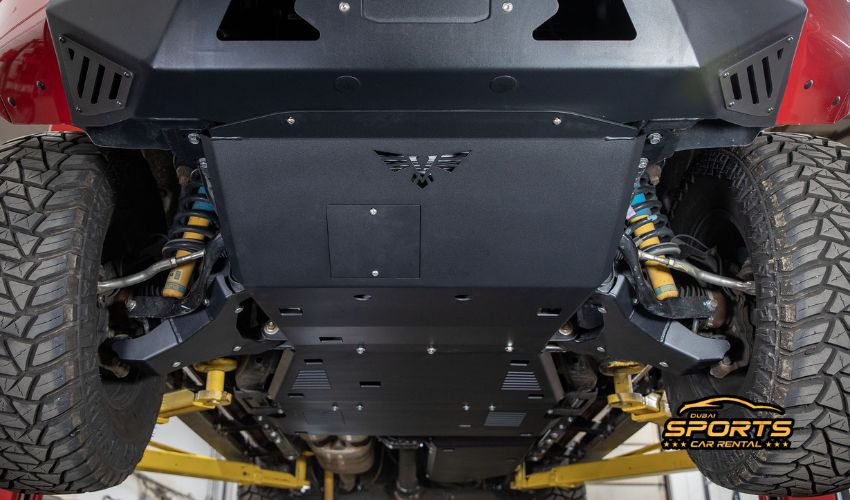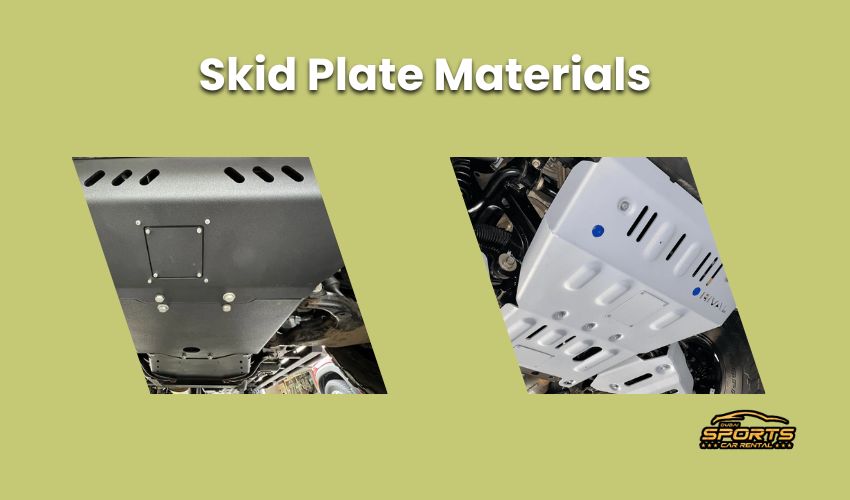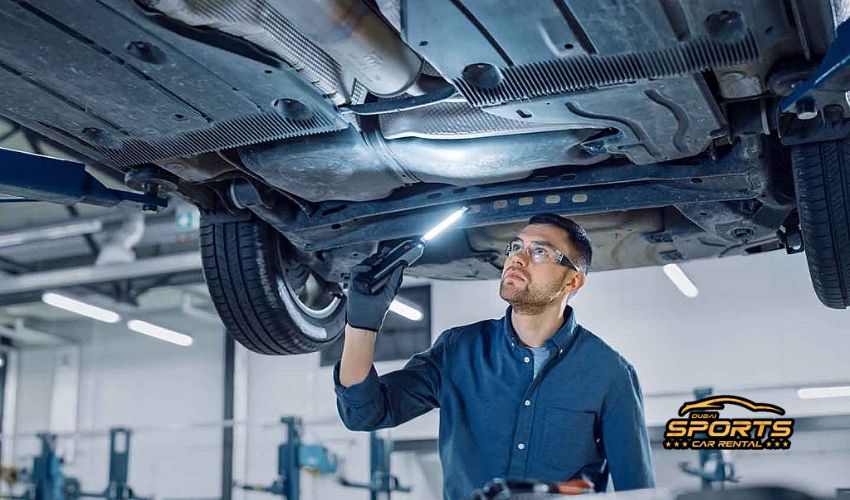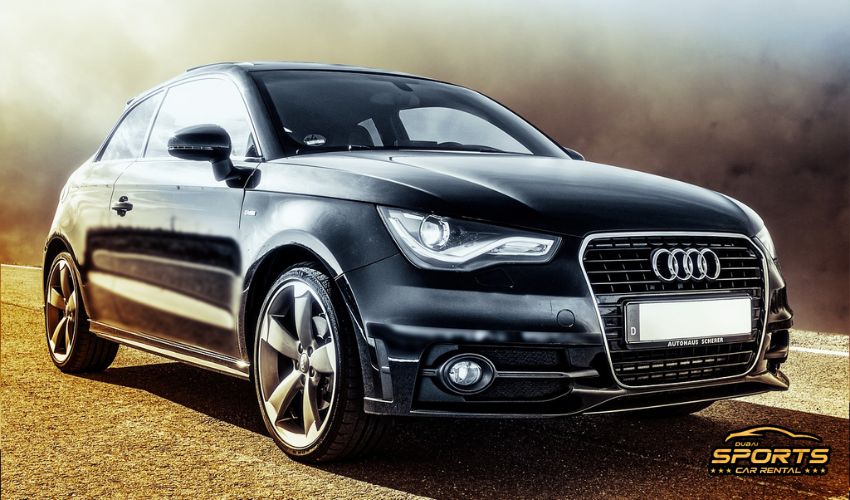Types of Skid Plates on a Car
- Engine Skid Plates
- Transmission Skid Plates
- Transfer Case Skid Plates
- Fuel Tank Skid Plates
Engine Skid Plates
Engine skid plates, sometimes called engine splash guards or lower engine covers, are panels under the engine that protect it from road hazards and fluid leaks. Although engine skid plates are essential for 4×4 vehicles, you can also install them on your regular car or luxury vehicle like Audi and BMW.
Transmission Skid Plates
A transmission skid plate shields the transmission, often extending from the engine skid plate between the rear engine and transmission cross members. Skid plates protect exposed parts, absorbing impacts from obstacles to keep components working. Their smooth surface helps the vehicle slide over obstacles instead of getting hung up.
Transfer Case Skid Plates
For superior durability, this skid plate mounts directly to your car’s chassis using strong, zinc-coated steel brackets. Ventilation holes keep it cool, and drainage holes prevent dirt, pebbles, or water from accumulating during off-road adventures. This design ensures easy cleaning and long-lasting protection for your vehicle’s undercarriage.
Fuel Tank Skid Plates
Off-road vehicles need fuel tank skid plates to protect the fuel tank from damage. These plates mount under the chassis and safeguard the tank from impacts and scrapes. The skid plate secures the gas tank, and straps keep the tank firmly within the plate. They also protect other vital parts like the oil pan, radiator, and transmission.
Skid Plate Materials
- Aluminum Skid Plates
- Steel Skid Plates
- Composite Skid Plates
Aluminum skid plates offer a lighter weight option compared to steel, potentially boosting fuel economy and handling. Their corrosion resistance makes them ideal for harsh conditions. However, they might bend or break under severe impacts and tend to cost more.
Steel skid plates are tough and durable, able to handle severe impacts without bending. They are heat resistant and cheaper than aluminum. The downside is they are heavier, impacting fuel economy and handling, and they rust if not correctly cared for.
Combining the best of aluminum and steel, composite skid plates are lightweight yet strong. They are a good option if you want both durability and fuel efficiency, and they can handle a range of off-road conditions.
DIY Vs. Professional Installation
| Aspect | DIY Installation | Professional Installation |
| Tools Required | Basic tools (wrenches, jacks) | Specialized tools (hydraulic lifts, torque wrenches) |
| Skill Level | Moderate mechanical skills | Professional expertise |
| Time Investment | Several hours | Typically faster |
| Cost | Lower (only parts and basic tools) | Higher (labor costs included) |
| Precision | Depends on individual skill | High precision and accuracy |
| Safety | Requires careful handling | Professionally managed safety protocols |
| Warranty | No warranty on DIY work | Often includes a warranty on labor |
| Convenience | Requires personal effort and time | More convenient, less personal effort |
How to Install the Skid Plate on your Car?
First, safely lift your car with a jack and secure it with jack stands. Next, carefully position the skid plate over its mounting points on the frame. Then, use the supplied bolts to attach it. You might need a helper. Now, double-check all bolts are tight and nothing interferes with other parts. You will need a jack, a torque wrench, jack stands, sockets, and possibly screwdrivers or hex keys. Always follow the manufacturer’s instructions to avoid damage.
Skid Plate Maintenance
Pre-trip car inspections are always necessary. The same is true for skid plates installed on your car. Therefore, regularly inspect your skid plate for dents, cracks, or missing bolts, fixing problems right away. Keep it clean by removing dust, dirt, and debris, using appropriate cleaners, and avoiding harsh materials. Apply a protective coating to prevent rust. For damage, decide if it needs repair or replacement; minor dents might be fixed, but severe damage usually means a new skid plate.
Skid Plates Vs. Armor Plates
Skid plates and armor plates both protect vehicles, but they have different jobs and features. Skid plates are usually aluminum or steel, and they shield the undercarriage from rocks and rough terrain, protecting components like the engine and fuel tank.
Armor plates, however, are made of stronger steel or composites to withstand bullets and explosions. They are used on military and security vehicles. Armor plates are much heavier and more expensive than skid plates. Choose skid plates for off-roading where weight and corrosion resistance matter. Armor plates are for situations demanding extreme protection from serious threats.





